Tube-lipped bat: The tongue is 1.5 times longer than the body! To prevent it from dangling in the wind, it had to be hidden in the chest (7 photos)
We, apartment dwellers, sometimes have the idea that there is nothing left to explore in the world. All the islands, mountains and forests are mapped, only small insects and deep-sea creatures have not appeared before the all-penetrating gaze of science. Only this look is not so penetrating: the tube-lipped nectar bat resists it so gracefully that 16 years after its discovery it remains a complete mystery. 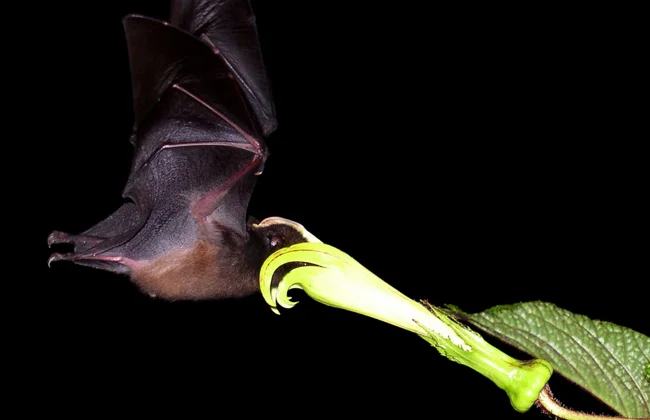
Ecuadorian pundits and ladies say that bats settled in their Andes at an altitude of 1 to 2.5 kilometers above sea level. Colleagues from Colombia, Paraguay and Bolivia object - they saw this species with their own eyes on the territory of their countries! 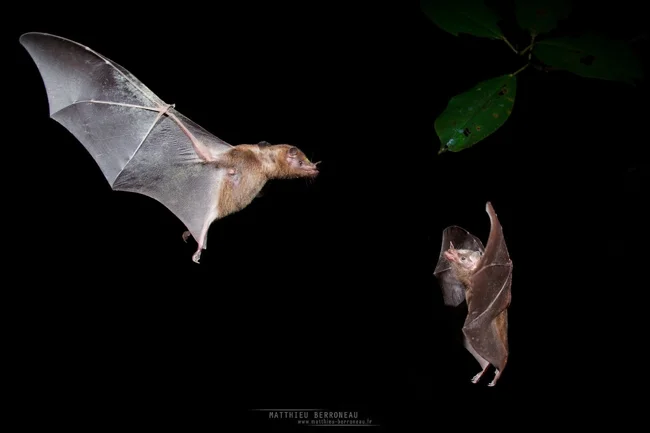
- Listen, let's play a trick on scientists so that they think that our species lives in different parts of South America? - Lets do it!
Well, or you didn't see it. Our mysterious stranger has 3 close relatives. They can only be distinguished from each other at close range. What gives the tube-lipped mouse away from the rest is, what a surprise, its lips. A lip-rolling machine has clearly passed along the animal’s lower lip: it protrudes forward and forms a tunnel through which a frighteningly large tongue slides. 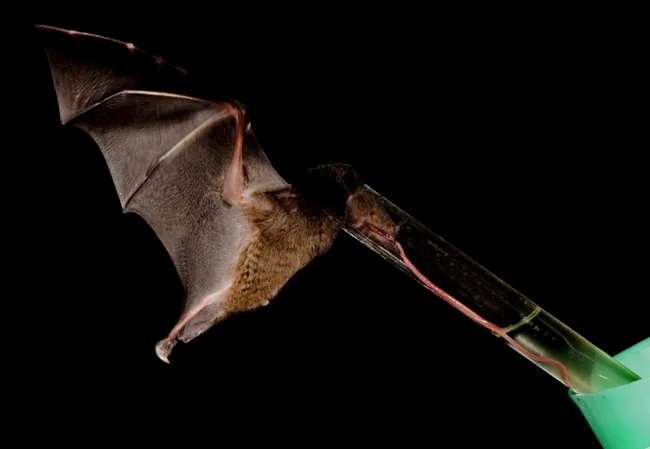
The average length of a mouse is 5.5 centimeters, the average length of a tongue is 8.5 centimeters. This is 1.5 times longer than the body! To study the structure of the abnormally large organ, scientists had to perform an autopsy. Don't worry, not a single bat was harmed - the animal died a natural death. 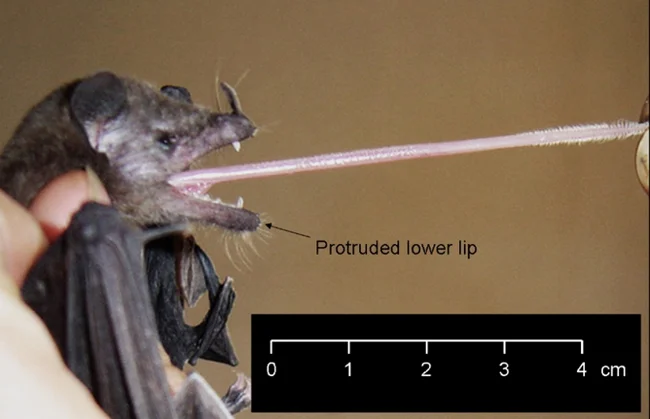
It turned out that her tongue is attached in the area of the heart, and the muscles extend right up to the xiphoid process! Feel the bottom edge of your sternum, the bone where your ribs are attached. And then lower your hand a little lower and you will feel a small hard bone - this is the xiphoid process. Do you want to have the same language? 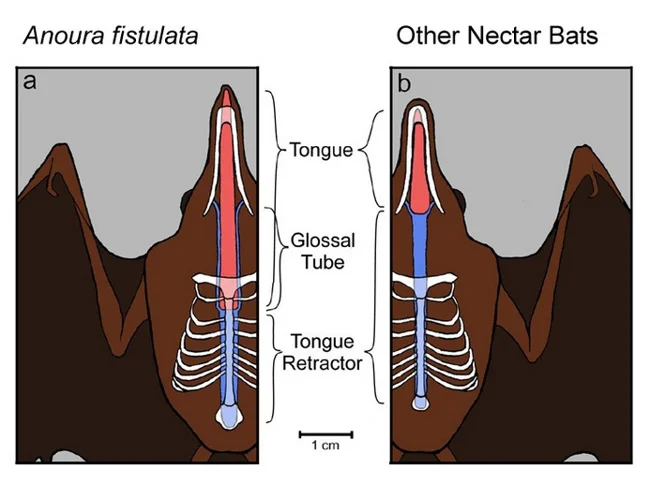
On the left is the tongue of a tube-lipped bat, on the right is that of a common nectar bat. As you can see, our heroine’s tongue is twice as large.
And I don’t want to, it will be awkward to eat with him! At least for us people. But the tube-lipped mouse has a solid payoff from its taste analyzer. Only she reaches the nectar of centropogon, an endemic flower. She is the only pollinator of this flower. In this situation, everyone wins: the bat gets tasty treats from the plant, and the plant gets a continuation of its kind. 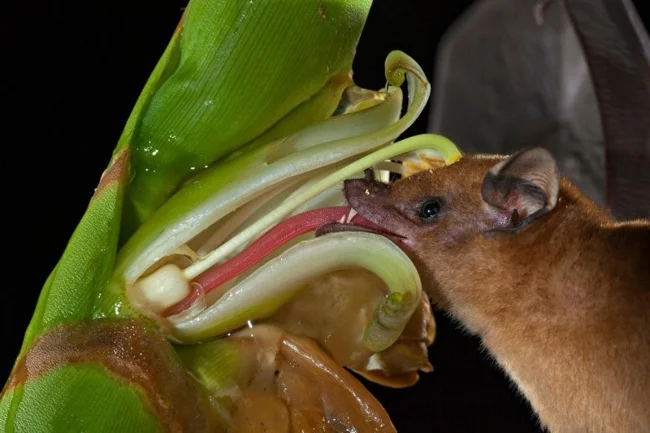
Having eaten well, the nocturnal creatures return to damp caves, where they hang out in small and friendly colonies. There they reproduce their own kind, but very little is known about this process. Shy animals have chosen too hard-to-reach places to live. Apparently, females give birth to two or more babies. But at what speed they grow, how quickly they find a mate and how long they live in this world is a mystery covered in the darkness of the caves... 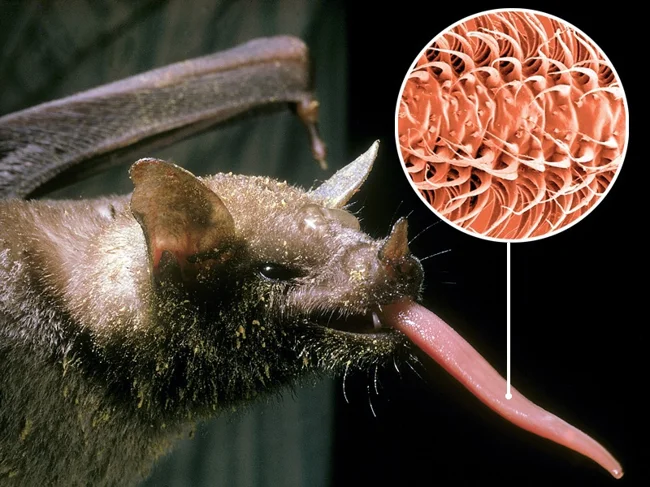
And their tongues are also very rich in thorns. Just like cats.
My rating for the tube-lipped nectar bat: ??? from ???. What a mouse, such a rating!
